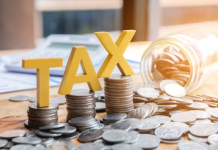
The Consumer Price Index (CPI) is a well-known measure of inflation, but it is just one of many economic indicators used to gauge the health of an economy. This article will compare and contrast the CPI with other key economic indicators such as the Producer Price Index (PPI), Gross Domestic Product (GDP), and unemployment rates. Understanding these differences and their interconnections can provide a more comprehensive view of the economy. Here’s a guide from experts such as Kavan Choksi.
The Consumer Price Index (CPI)
The CPI measures the average change in prices paid by urban consumers for a basket of goods and services over time. It is often used to assess inflation, or the rate at which the general level of prices for goods and services is rising. The CPI covers a wide range of items, including food, clothing, housing, transportation, and medical care, making it a broad indicator of consumer price changes.
The Producer Price Index (PPI)
Definition and Scope:
- The PPI measures the average change in selling prices received by domestic producers for their output. Unlike the CPI, which focuses on consumer prices, the PPI tracks changes in prices at the wholesale or producer level, before products reach the consumer.
Relationship with CPI:
- The PPI and CPI are interconnected, as changes in producer prices can eventually affect consumer prices. For example, an increase in the cost of raw materials (tracked by the PPI) may lead to higher production costs for manufacturers, which can be passed on to consumers, raising the CPI.
Use in Policy and Business:
- The PPI is used by businesses to make pricing decisions and by policymakers to understand inflationary pressures in the production pipeline. It can serve as a leading indicator for CPI, providing early signals of inflation trends.
Gross Domestic Product (GDP)
Definition and Scope:
- GDP measures the total value of all goods and services produced within a country over a specific period, typically a quarter or a year. It is a comprehensive indicator of economic activity and growth.
Relationship with CPI:
- While GDP measures overall economic output, the CPI focuses on price changes. However, they are related: high inflation (rising CPI) can reduce consumer purchasing power, potentially slowing economic growth (lower GDP). Conversely, robust economic growth can lead to increased demand for goods and services, potentially driving up prices and the CPI.
Use in Policy and Analysis:
- GDP is a critical indicator for policymakers, economists, and investors to assess the health of the economy. It helps determine monetary policy, fiscal policy, and investment strategies. Unlike the CPI, which is focused on inflation, GDP provides a broader picture of economic performance.
Unemployment Rates
Definition and Scope:
- The unemployment rate measures the percentage of the labor force that is unemployed and actively seeking employment. It is a key indicator of labor market health and economic stability.
Relationship with CPI:
- The unemployment rate and CPI are often inversely related. High unemployment typically dampens consumer spending, reducing demand for goods and services, which can lower inflation (CPI). Conversely, low unemployment can increase consumer spending and demand, potentially driving up prices.
Use in Policy and Social Planning:
- The unemployment rate is crucial for shaping labor policies, social welfare programs, and economic planning. Policymakers use it alongside the CPI to balance inflation control with employment goals.
The Consumer Price Index is a vital tool for measuring inflation, but it is most effective when considered alongside other economic indicators like the PPI, GDP, and unemployment rates. Each indicator provides unique insights into different aspects of the economy, and their interconnections help create a more nuanced understanding of economic health and trends. By comprehensively analyzing these indicators, policymakers, businesses, and consumers can make better-informed decisions to foster economic stability and growth.

























